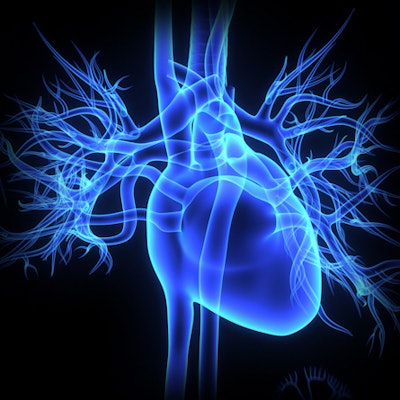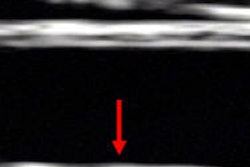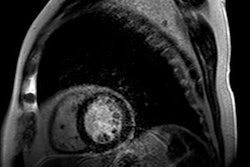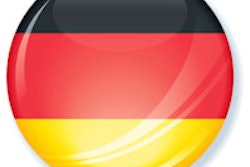
New efforts are underway to increase dose awareness among European cardiologists, but dose-optimization advocates face a very long road ahead before every cardiologist who uses radiation has sufficient understanding of dose to protect himself and his patients, according to a commentary by U.K. experts.
To begin with, the use of radiation is essential to modern cardiology, and cardiologists are accustomed to using it as needed to arrive at a diagnosis, noted cardiologist Dr. Eldred Roberts and medical physicist Debbie Peet from the University Hospital of Leicester.
"Cardiologists rely heavily on ionizing radiation imaging as a guide to diagnosis, prognosis, and treatment," they stated, adding that as the technology for treating heart disease continues to advance, a growing range of new radiation-bearing techniques and interventional procedures are being put on the list.
The primary goal of cardiologists is making a clear diagnosis, but the diagnosis must be accomplished alongside a strong awareness of the properties of ionizing radiation and the safety issues associated with it, they wrote (British Journal of Radiology, November 2016, Vol. 89:1067, pp. 20160248).
The article illustrates some of the interplay between cardiology, radiological techniques, cardiology training, and ionizing radiation regulations, and establishes a context for training and accreditation of cardiologists who use ionizing radiation.
Workflow patterns require new training
Changes in the ways clinicians and their staff work to perform a growing array of procedures require attention to the use of ionizing radiation, the authors wrote.
"For example, the growing number of cardiac structural interventions such as transcatheter aortic valve intervention, mitral valve procedures, and procedures to close the left atrial appendage can be lengthy and require different imaging protocols to those we are used to for pacemaker therapy and coronary intervention," Roberts and Peet wrote.
The new procedures often require a larger staff to perform them, including an echocardiographer, cardiac surgeon, surgical assistant, several interventionalists, an anesthetist, and a radiographer. Some of these personnel may not be accustomed to catheterization lab environments, and may not be as radiation-aware as they need to be. As a result, there is a need and a duty to ensure these people are well trained and protected, the authors wrote.
Another problem relates to a kind of tunnel vision among clinicians when it comes to diagnostic imaging, in that they may be tempted to look at each procedure in isolation from other radiation-bearing procedures contributing to the cumulative radiation dose.
"There are many situations where a more rounded understanding of imaging methods can be beneficial," they wrote. For example, if a patient presenting with chest pain undergoes pulmonary CT angiography that turns out negative, it can be a good idea to review the images carefully. In such a case, it might be wise to seek the advice of a radiologist to focus on nonpulmonary aspects of the images such as coronary calcium, coronary anomalies, coexistence of a hiatal hernia, the presence of lymph nodes, etc., before proceeding to cardiac CT.
Such a review can offer clues about management, and the need for additional exams in the context of the cumulative radiation dose, they wrote.
"Knowing how to get the most out of a combination of imaging methods requires working knowledge of them all," Roberts and Peet wrote. Insisting on obtaining a complete angiographic depiction of the coronary anatomy can lead to excessive radiation that provides no clinical value, for example. When the diagnosis isn't definitive, other functional techniques can help fill the information void, for example, reviewing previous cross-sectional imaging, using different image settings to enhance visualization of a stent, intravascular ultrasound, and functional flow reserve testing.
"These things can be addressed only if those who train cardiologists have a subtle understanding of such techniques and issues," the authors wrote.
The current landscape of evolving complex interventional techniques and imaging methods, some anatomical and others functional, includes tests that provide some overlapping information, requiring again a nuanced understanding of the techniques that must continue as procedures and technologies improve.
Training on the way
A working group consisting of the British Institute of Radiology (BIR) and members of the Royal College of Physicians cardiology specialist advisory committee has been created to develop an e-learning package for cardiologists, the authors wrote.
The comprehensive syllabus includes a review of the principles of ionizing radiation and radiation, appropriate use of technologies to reduce unnecessary radiation dose, radiation protection, and appropriate use of technologies to reduce unnecessary radiation dose. Also covered are patient and staff safety, contrast agent use, and alternative imaging modalities.
The curriculum is built on the foundations of previous ionizing radiation regulations and designed to meet the needs of practicing cardiologists, the authors explained. The focus is on cardiac catheterization, but the syllabus offers a broader context and relevance to other aspects of cardiology.
Such a course might even serve as the basis for a Europe-wide training and accreditation course for cardiologists, perhaps combined with more general user training rather than specialist accreditation. A modified version could be developed for nonphysician staff who work in cardiac care environments such as cath labs. But the immediate goal is to develop a program for U.K. cardiologists working with radiation, Roberts and Peet wrote.



















